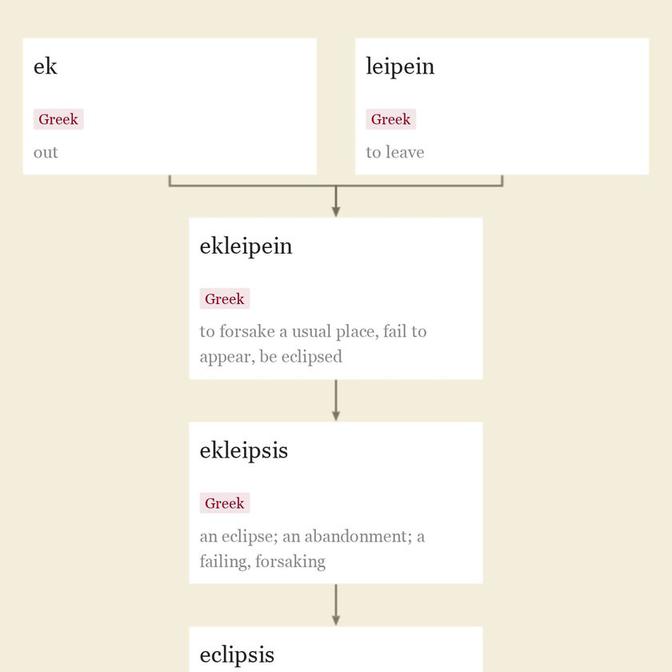ellipsis (n.)
1560s, "an ellipse" in geometry, from Latin ellipsis, from Greek elleipsis "a falling short, defect, ellipse in grammar," noun of action from elleipein "to fall short, leave out," from en- "in" (see en- (1)) + leipein "to leave" (from PIE root *leikw- "to leave").
Grammatical and rhetorical sense in English first recorded 1610s: "a figure of syntax in which a part of a sentence or phrase is used for the whole, by the omission of one or more words, leaving the full form to be understood or completed by the reader or hearer."
In printing, "a mark or marks denoting the omission of letters, words, or sentences," by 1867. Dashes, asterisks, and period have been used to indicate it. In reading aloud, a short pause was proper at a grammatical ellipsis in the writing.
WHEN a word or words are omitted by the figure ellipsis, a pause is necessary where the ellipsis occurs. [Robert James Ball, "The Academic Cicero; or Exercises in Modern Oratory," Dublin, 1823]
Probably the association of the typographical symbol with a pause in speaking is why 20c. writers began to use the three periods to denote a pause or an interruption in dialogue, creating a potential confusion noted by 1939. Related: Ellipticity.
Trends of ellipsis
updated on January 13, 2020
Trending words
Dictionary entries near ellipsis
ell
Ella
-ella
Ellen
ellipse
ellipsis
ellipsoid
elliptic
elliptical
Ellis Island
elm

